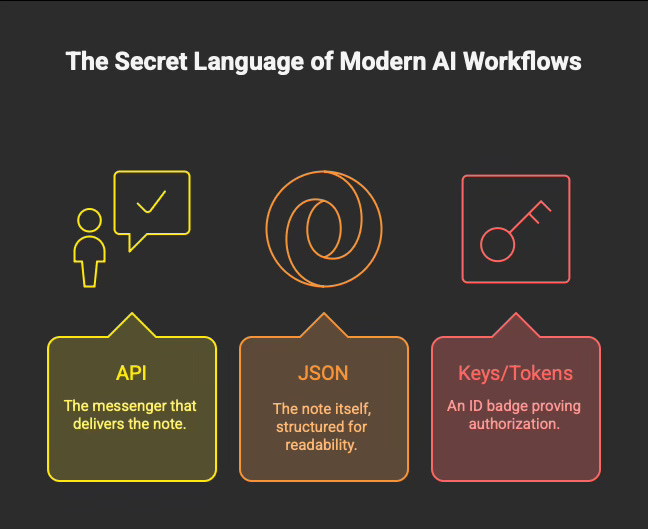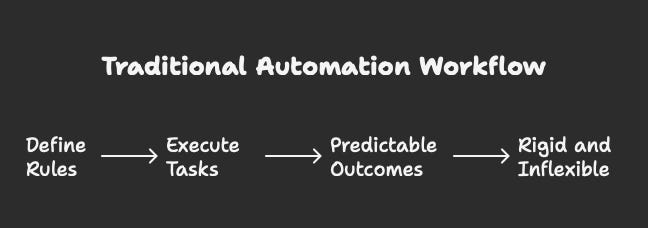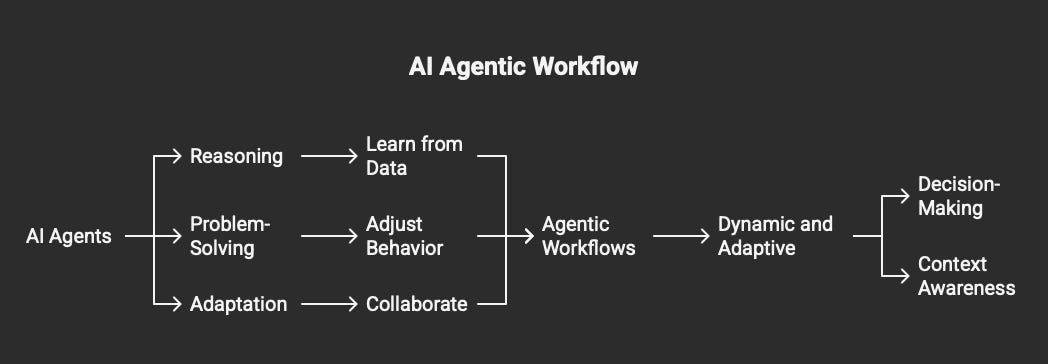The Secret Language of Modern AI Workflows
A beginner-friendly guide to the secret language behind agentic workflows
AI agents may look like they’re working magic, but behind the scenes, they’re speaking a particular language: APIs and JSON. These two technologies form the foundation that lets agents pull data, adapt to requests, and connect across apps and services. In this technical beginner’s article, you’ll learn how APIs act as the messenger, how JSON gives structure to the conversation, and why keys and tokens matter for security.
Article complexity: Technical, but not terrifying.
What are AI agents and agentic workflows?
Workflows can mean almost anything in business. Traditional automation workflows follow fixed rules like a script. Agentic workflows use AI. They can adapt, make decisions, and hold conversations with people and other agents.
Traditional workflows
Let’s say you have a website where a customer fills out a form for technical support. It might contain fields like:
Name
Email address
Priority (Low, Medium, High)
Description of the issue
A traditional workflow always knows those fields will be required and can be run with a specific set of unchanging rules. If it sees “High,” it could send an email to an escalation manager for immediate response. A medium might follow another process, and a low priority follows yet another method.
A traditional workflow is a repeatable automation that always follows the same business rules and will reach the expected outcome every time.
Agentic workflows
When we introduce AI into these workflows, we move beyond simple rule-based automation. AI agents can make decisions, adapt to changing inputs, and even collaborate with other agents or people. Agentic workflows are the structures that connect these agents into a sequence of actions, where each step may involve reasoning, learning, or interaction, rather than just repeating the same rule every time.
While an agentic workflow can follow a set of rules, you should design it to be dynamic and adaptive. For example, imagine you run sales operations and the team likes to share a report with customers. Each salesperson, however, requests slight modifications, such as different date ranges, regions, or product categories. Every time, you have to stop what you’re doing, run the report, make the adjustments, add it to a sales deck, and send it back.
Guaranteeing some level of automation without AI can be very difficult. You would probably have to send the salespeople to a form that asks specific questions, and then the automation kicks in.
I can only imagine a flustered salesperson preparing for a big customer meeting. They will skip the form and send you a priority email. Now the automation is broken, and you are back to your old ways of getting that report manually.
Using AI, on the other hand, may be a pretty straightforward process, like this:
An AI agent reads your emails.
When it sees an email from a colleague asking for a unique report, the AI runs the report with the requested parameters.
Once the report is complete, it generates the sales deck, drafts the email, and then sends it over to you for final approval (or sends the email if you are feeling so bold).
Pretty cool, right? It turns out that kind of workflow is super simple to create, and you can even do that yourself. But if you do want to develop personal AI automations, you will need to know a little jargon.
How computers talk to computers
I am talking to you with words, which is our shared language. Computers do the same thing, only their secret language is called APIs (Application Programming Interfaces). When two systems want to pass information back and forth, APIs carry the messages in structured sentences of data.
RESTful APIs: The messengers
Keep reading with a 7-day free trial
Subscribe to Bill Talks AI to keep reading this post and get 7 days of free access to the full post archives.






